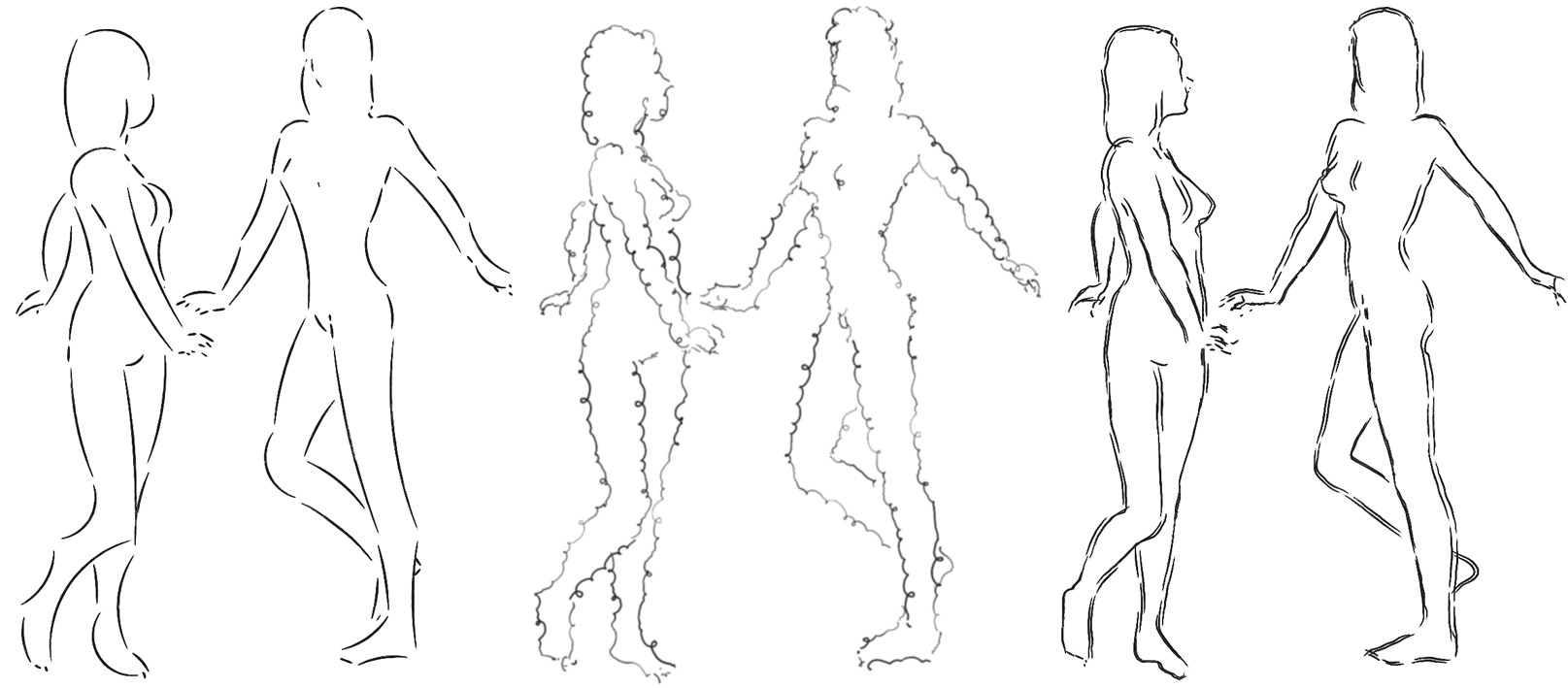Section: New Results
Expressive rendering
Active Strokes: Coherent Line Stylization for Animated 3D Models
Participants : Pierre Bénard, Lu Jingwan, Forrester Cole, Adam Finkelstein, Joëlle Thollot.
We present a method for creating coherently animated line drawings that include strong abstraction and stylization effects (Figure 9 ). These effects are achieved with active strokes: 2D contours that approximate and track the lines of an animated 3D scene. Active strokes perform two functions: they connect and smooth unorganized line samples, and they carry coherent parameterization to support stylized rendering. Line samples are approximated and tracked using active contours ("snakes") that automatically update their arrangment and topology to match the animation. Parameterization is maintained by brush paths that follow the snakes but are independent, permitting substantial shape abstraction without compromising fidelity in tracking. This approach renders complex models in a wide range of styles at interactive rates, making it suitable for applications like games and interactive illustrations.
|
Temporally Coherent Video Stylization
Participants : Pierre Bénard, Joëlle Thollot, John Collomosse.
The transformation of video clips into stylized animations remains an active research topic in Computer Graphics. A key challenge is to reproduce the look of traditional artistic styles whilst minimizing distracting flickering and sliding artifacts; i.e. with temporal coherence. This chapter surveys the spectrum of available video stylization techniques, focusing on algorithms encouraging the temporally coherent placement of rendering marks, and discusses the trade-offs necessary to achieve coherence. We begin with flow-based adaptations of stroke based rendering (SBR) and texture advection capable of painting video. We then chart the development of the field, and its fusion with Computer Vision, to deliver coherent mid-level scene representations. These representations enable the rotoscoping of rendering marks on to temporally coherent video regions, enhancing the diversity and temporal coherence of stylization. In discussing coherence, we formalize the problem of temporal coherence in terms of three defined criteria, and compare and contrast video stylization using these.



